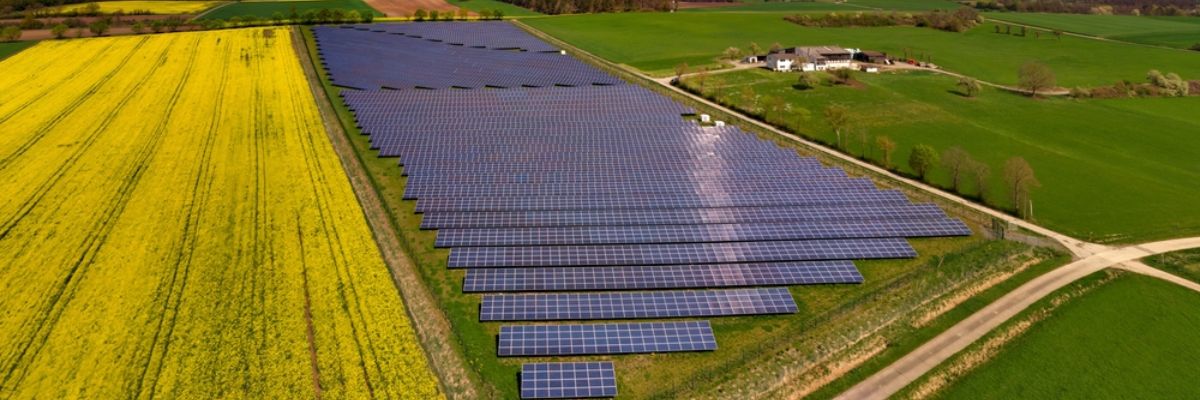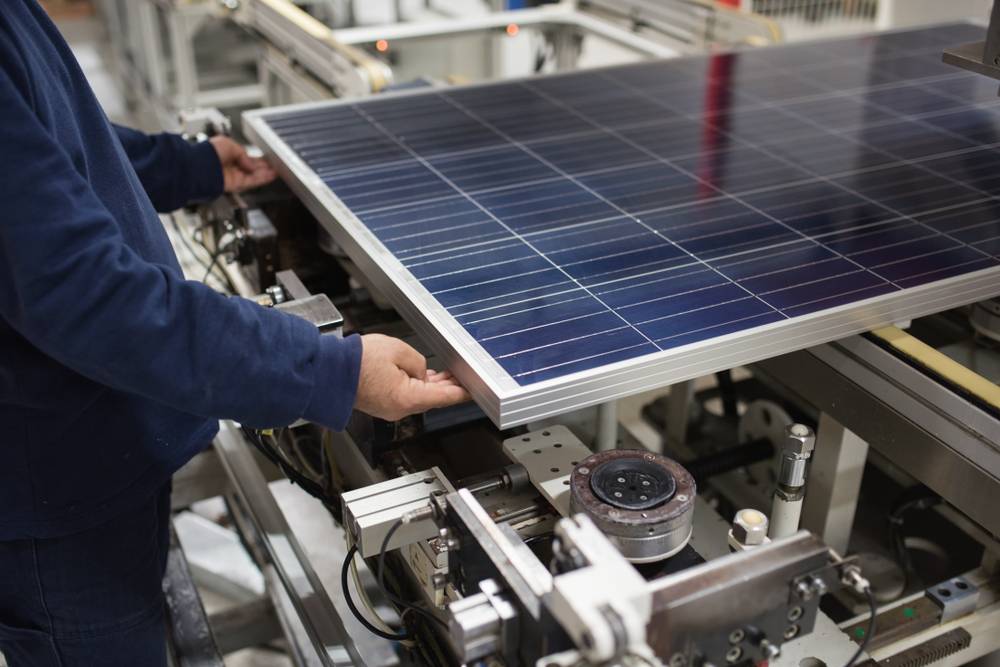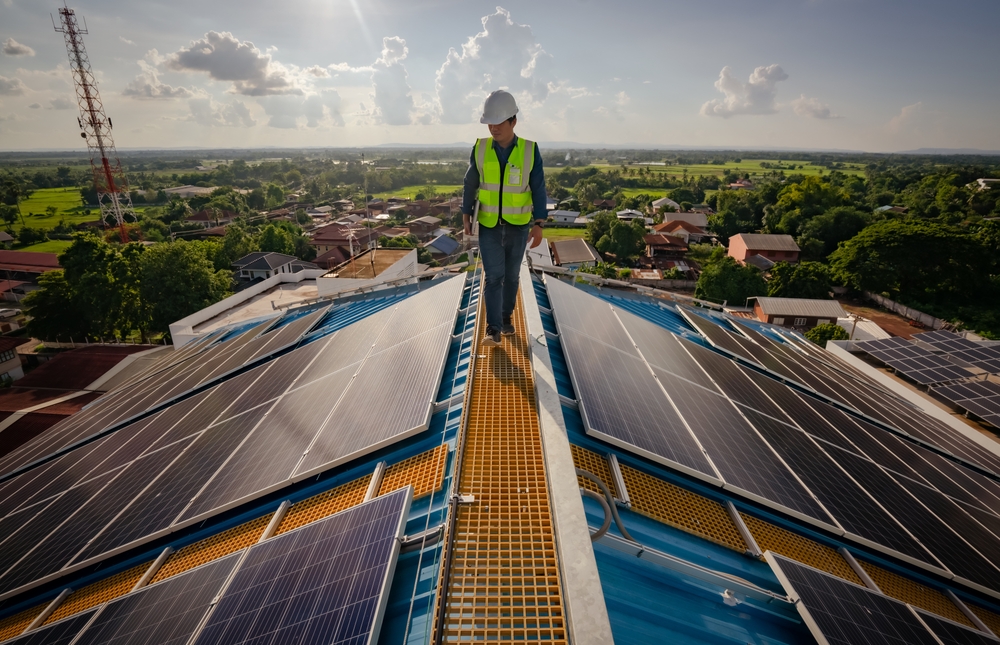
Green photovoltaic production in Europe within reach thanks to Czech researchers
24. 11. 2022
Photovoltaics, the conversion of sunlight into electricity, is currently one of the most sought-after renewable energy resources. However, around 97% of solar cells are imported from Asia, especially China. The PILATUS project, led by Martin Ledinský’s research team from the Institute of Physics of the CAS, is aimed at changing this situation. The plan is to install production lines for innovative silicon solar panels in Europe.
In 2020, less than 1% of the world’s solar cell production was produced in Europe. However, more than a fifth of the global capacity of photovoltaics (PV) was installed. In the context of the current geopolitical situation, though, dependence on the import of solar cells from Asia appears to be a bit of a gamble where energy security is concerned.
“Most photovoltaics today, approximately 97%, are produced in China, which is a rather dangerous dependence, considering the fact that photovoltaics are becoming an important part of the energy mix of every country,” Martin Ledinský explains. The European Union’s aim is to be capable of obtaining one-third (32%) of electricity from renewable resources by 2030. The Czech Republic is less ambitious in its energy and climate plan, aiming for 22%.
Advancements in PV are therefore a logical step forward, as is boosting production capacity across Europe. The aim of the PILATUS project, supported by a Horizon Europe grant of 10.5 million euros, is to bolster this effort. A team from the Institute of Physics of the CAS, led by Martin Ledinský, together with colleagues from Belgium, Italy, Germany, the Netherlands, Norway, Switzerland, and the UK are involved in the three-year project.

Currently, 97% of photovoltaics is produced in China. The PILATUS project aims to restart production in Europe.
The aim is to increase PV production capacity in Europe while reducing the negative impact on the environment. Experts plan to use high-efficiency modules, manufactured with regard to the recyclability the utilised materials, which meet the strictest European environmental requirements. Three pilot lines are to be set up by 2025, encompassing the entire production cycle of innovative silicon solar panels.
“The planned pilot line for the production of photovoltaic modules will increase the current total production capacity of PV cells in Europe by thirty percent,” Ledinský notes. The annual production capacity of the pilot plant will reach at least 170 MWp. If the project proves to be viable, a second phase (a factory with an annual capacity of 3–5 GWp) will be implemented.
Higher-performance solar cells
The PILATUS project will use a patented technology of silicon solar cells with contacts on the rear side of the cells, the development of which our team of Czech researchers was involved in. “Both top and bottom contacts are located on the backs of the cells. The front side is therefore completely unhindered and we are able to increase the efficiency of photovoltaic conversion to the maximum possible values,” Ledinský explains.
In this case, there are no opaque metal contacts shadowing the illuminated side of the cell which, combined with the optimal passivation (formation of a protective layer) of the surface defects, makes it possible to produce solar cells with a photovoltaic conversion efficiency of more than 26%. Commonly used cells produced in China today have an efficiency of around 22%.
Positive and negative electrodes are prepared on the rear side of the silicon crystal plate by applying strips of amorphous silicon with a thickness of only a few nanometres. Although more technologically demanding, this makes it possible to capture and utilise light on the underside of the panel, reflected from the surface beneath the panel. This can increase the electrical power supplied to the grid by up to 15%.

The ideal inclination of solar panels in use today is 30–35 degrees, oriented south. It will be possible to install the new cells vertically without reducing their efficiency.
Another advantage of the technology used is that the cells can be installed vertically. In the future, such panels could be used in agriculture, combining both the production of electricity and crop production within a single area. The possibility of placing the panels on noise barriers is also an interesting concept that is being considered.
The new solar cells will be more efficient and more environmentally friendly. The higher efficiency, combined with the smaller surface area needed for installation, makes them a more economically friendly option than their Chinese competitors. “If we want to be competitive, we need to come up with new high-efficiency technology that makes PV affordable while also meeting stringent environmental requirements. That is why we will largely utilise energy from Norwegian hydropower, thus minimising our carbon footprint,” Ledinský concludes.
The press release (in Czech) is available here.
Prepared by: Markéta Wernerová, with use of the CAS press release, Division of External Relations, CAO of the CAS
Translated by: Tereza Novická, Division of External Relations, CAO of the CAS
Photo: Shutterstock
 The text is released for use under the Creative Commons license.
The text is released for use under the Creative Commons license.
Read also
- A trapped state: The pandemic impact on public attitudes, trust, and behavior
- Aerial archaeology: Tracing the footsteps of our ancestors from the sky
- Archaeologists uncover ancient finds along Prague Ring Road
- Our microbiome largely depends on what we eat, says microbiologist Michal Kraus
- The ABCs of writing: Why did its invention mark a turning point for humankind?
- We learn, remember, forget… What can memory actually do? And can we outsmart it?
- New Center for Electron Microscopy in Brno opens its doors to global science
- The hidden lives of waste: What can we learn from waste workers and pickers?
- A unique lab is hidden right beneath Prague’s Vítkov Hill
- Renewables are a strategic investment in European security, scientists say
The Czech Academy of Sciences (the CAS)
The mission of the CAS
The primary mission of the CAS is to conduct research in a broad spectrum of natural, technical and social sciences as well as humanities. This research aims to advance progress of scientific knowledge at the international level, considering, however, the specific needs of the Czech society and the national culture.
President of the CAS
Prof. Eva Zažímalová has started her second term of office in May 2021. She is a respected scientist, and a Professor of Plant Anatomy and Physiology.
She is also a part of GCSA of the EU.